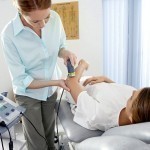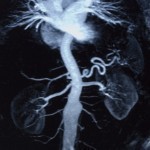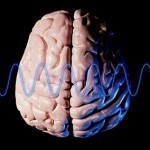Fraxel laser is a technology that is used for dealing with age spots, melasma (Mask of Pregnancy), sunspots, wrinkles at various parts of the face, upper lip lines, sun burned skin, and acne scars. Today it is the prime technology used for treating acne scars, as it barely creates any downtime. Initially developed and implemented in late 2003 and early 2004, Fraxel laser treatments are popular today as it allows any patient to own a smooth, youthful, and rejuvenated skin. Inside the Fraxel Laser Technology The Fraxel laser uses a Read More
What Does Potassium do for the Body?
Potassium is an essential mineral that the body uses to perform various functions. The body naturally regulates the amount of potassium in the body to keep it in working order. This is done by the kidneys, the bowels and even natural processes such as sweating. Eating a diet which incorporates the recommended amount of potassium supplementation is best to keeping the body healthy. Improper amounts of potassium in absence or excess can lead to serious problems and even death. It is important to ensure that potassium levels are kept at optimum levels. Potassium and Cell Read More
Neuroscience
Neuroscience is the study of the nervous system as a whole. Someone who does neuroscience takes numerous different disciplines–psychology, computer science, mathematics, physics, philosophy and medicine to name a few–and bring them together with the understand of how the brain works. Traditionally, neuroscience was a branch of biology; however, because of a revolutionary change in how things are done, it's now evolved into a much larger network of understanding the brain's processes. Modern Day Neuroscience While in the past, neuroscience was all about understanding what neurons were, how to brain Read More
What is Electrotherapy?

Electrotherapy is a medical technique in which an electric current is used to perform a wide variety of tasks associated with pain, neurological disorders, muscle-related conditions, and drug delivery. Electrotherapy includes a range of medical techniques, some of which are under much debate and criticism. While electrotherapy itself is an accepted form of medical treatment, electromagnetic therapy (a subset of electrotherapy) is usually discredited due to little evidence of either positive or negative effects. How Electrotherapy Works In electrotherapy, an electric current is applied directly to a muscle or tissue Read More
Osseointegration
Osseointegration is the connection between a living bone and the surface of an artificial implant, both functional as well as structural. Typically, titanium is used because it is an effective load-bearing implant. What it effectively does is allow for a prosthetic limb to fuse to the bone. When this occurs, it is as if the person (or animal) has a new limb rather than something connecting to the old limb. Since it is using titanium, the body won’t reject it because it is not interfering with the cells. While it Read More
What Happens When You Sneeze?
Sneezing is either an annoying or relieving thing for most people. The process of sneezing can occur in many different ways. This irritation can cause misery in some people who simply wish their sneezing to stop. Preventative measures for sneezing is also a possibility for some people. The Biological Process of a Sneeze The actual medical term for a sneeze is known as a sternutation. Sternutations occur when there is reason for the body to clear debris or buildup of mucus from the nasal passages and internal nose hairs. When the microscopic particles are introduced Read More
Magnetic Resonance Angiography

A Magnetic Resonance Angiography (MRA) is a type of Magnetic Resonance Imaging (MRI) scan that allows doctors to look at a patient’s blood vessels without using X-rays or other forms of radiation. MRAs allow the doctor to examine both the patient’s blow flow as well as the health of the blood vessels themselves. By using MRAs, doctors can discover any possible problems resulting from low blood flow and identify the source of the problem. MRAs can identify narrow regions of the patient’s blood vessels, damaged portions of the aorta in Read More
What Causes Left Handedness?
Left handedness is a person's preference in using the left hand over the right hand which, when considering the number of people, is relatively rare. It is believed that anywhere from seven to ten percent of the adult population is left handed. The rest are predominately right handed. The fundamental problem when discussing left handedness is determining the cause. Scientists have many theories with a lot of research to back it up, but different theories all have that research. Therefore, there is no single cause of left handedness, but there Read More
Isochronic Tones

Isochronic tones are used in brain entrainment. When a single isochronic tone is repeated rapidly and a pause of silence follows each pulse, the brain produces a similar frequency. Isochronic tones can change a person’s mood, affect a person’s physical attributes, and produce effects such as lucid dreaming, out-of-body experiences, or hypnosis. Isochronic tones are similar to binaural and monaural beats but differ because they do not change. How Brain Entrainment Works Brain entrainment is a relatively new field of study that involves frequency production in the brain. When the Read More
What Causes Dreams?
The cause of dreams is not known concretely. However, there are a series of theories that many psychologists present about the origin of dreams and, more importantly, the cause of them. Each theorist is unique and, until recently, few were based on science because there wasn't much neurological understanding. With the arrival of science, though, entirely different theories appeared about the different types of dreams. Freud on Dreams Sigmund Freud is known for saying that dreams were "the royal road to the unconscious." He felt that one could figure out Read More


Share on: